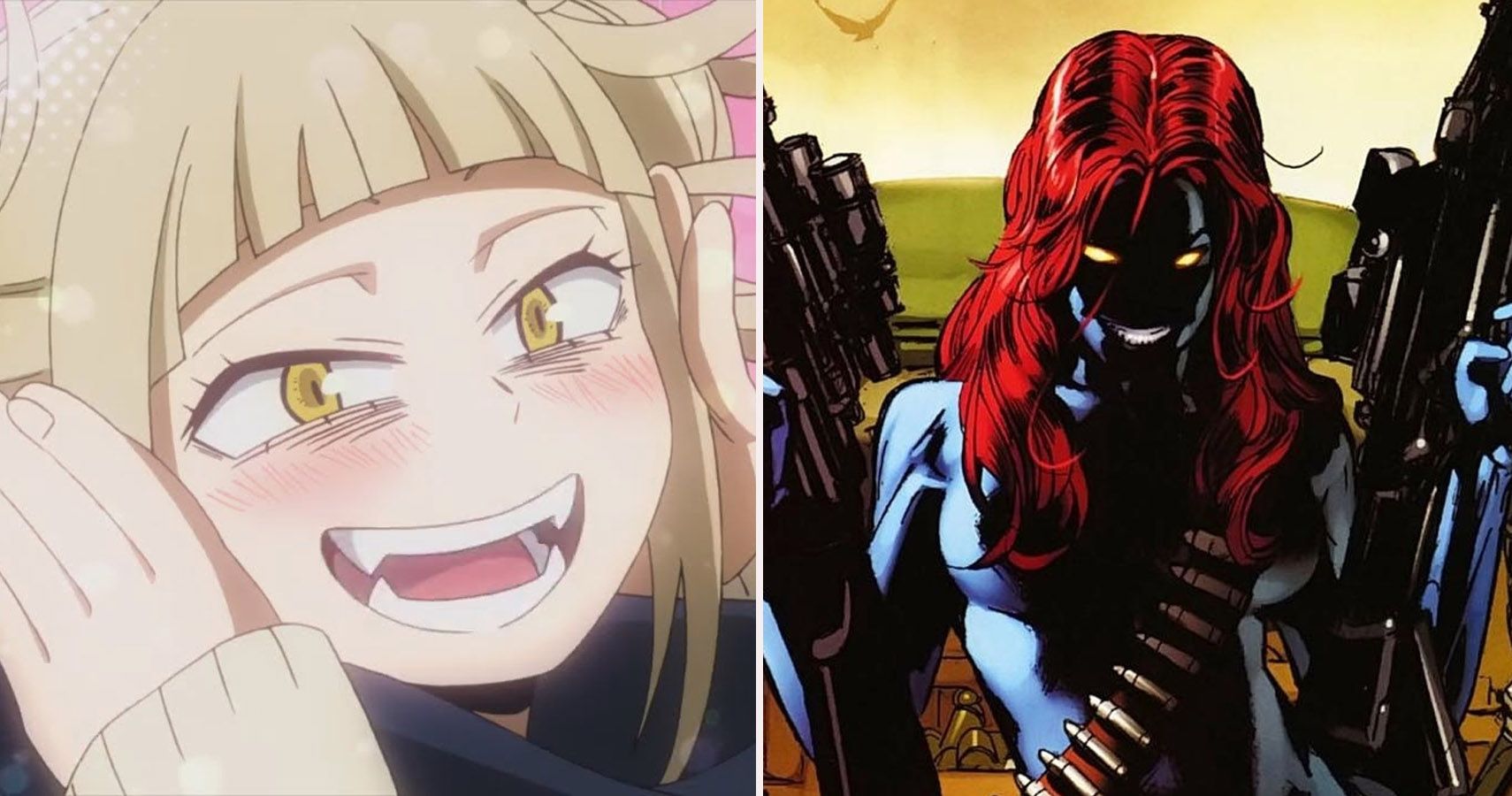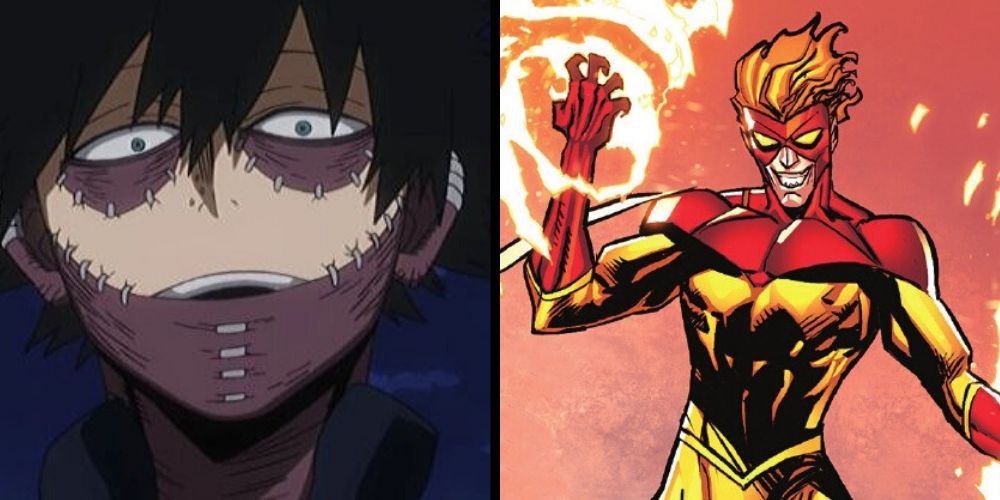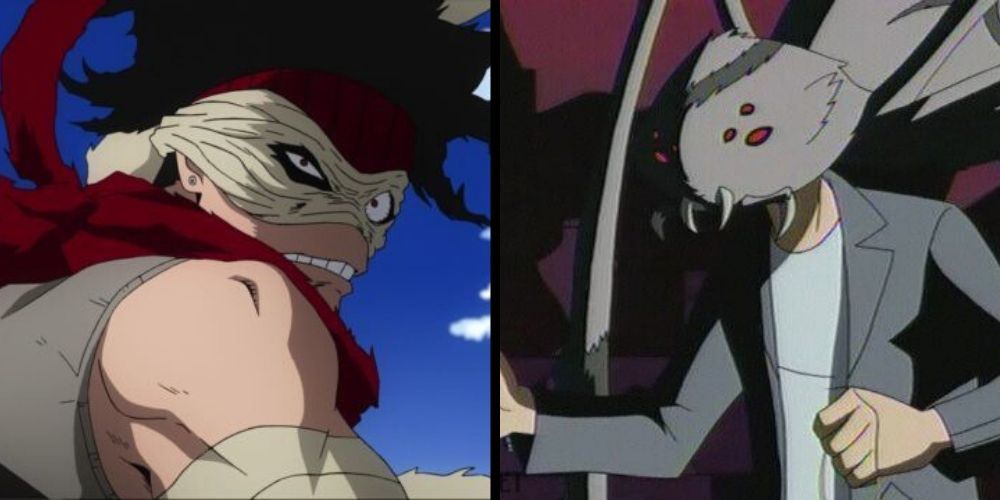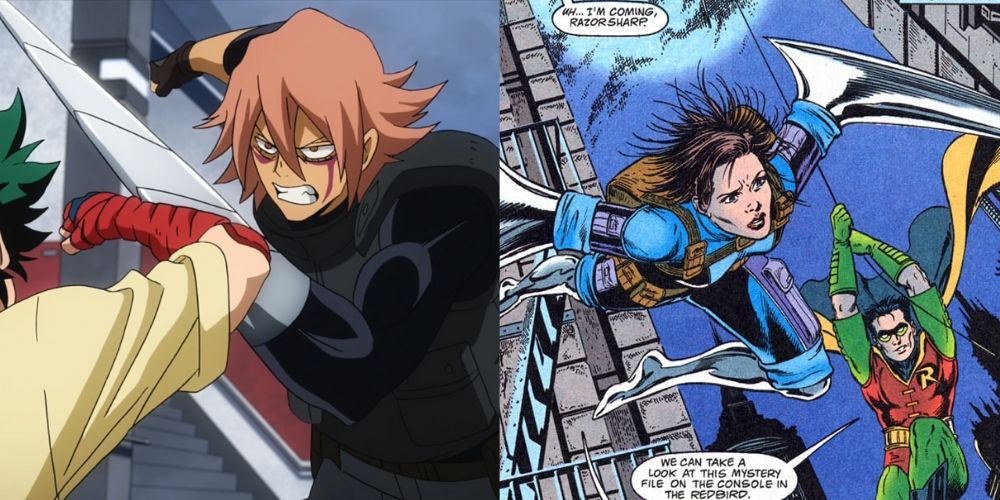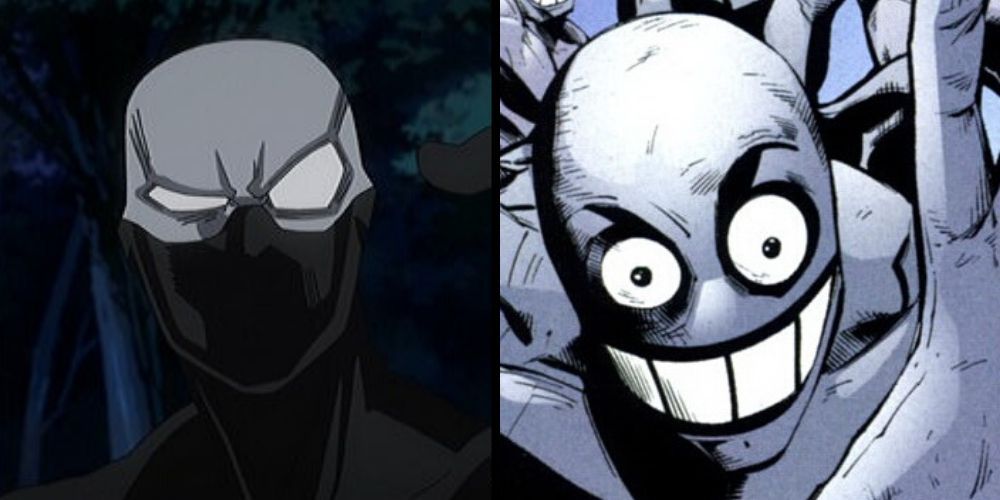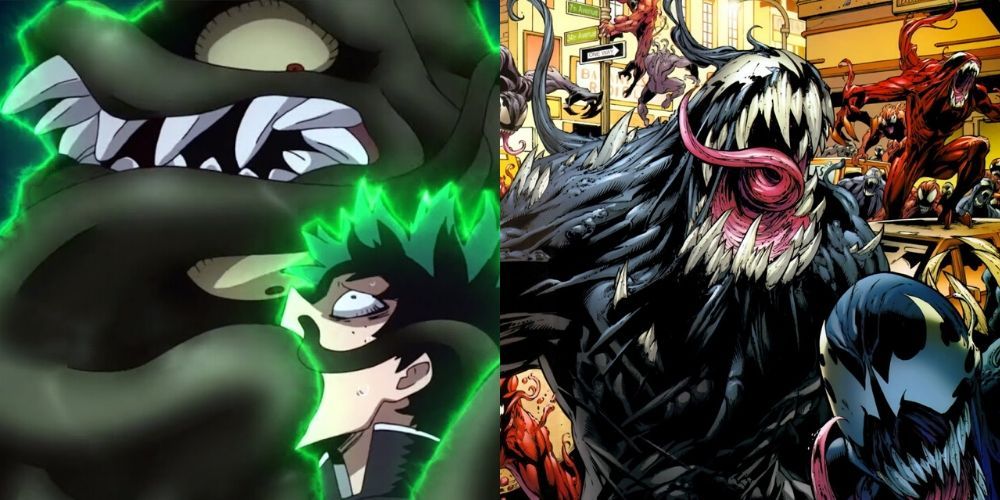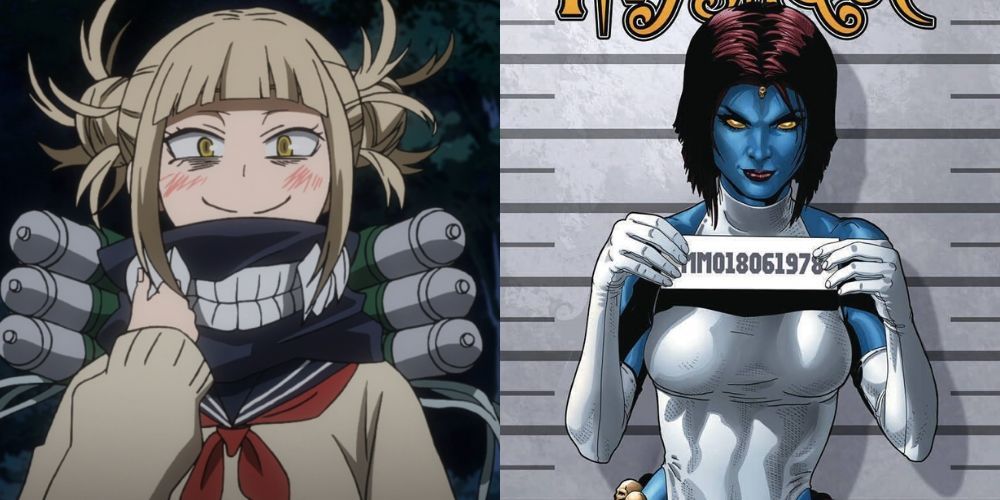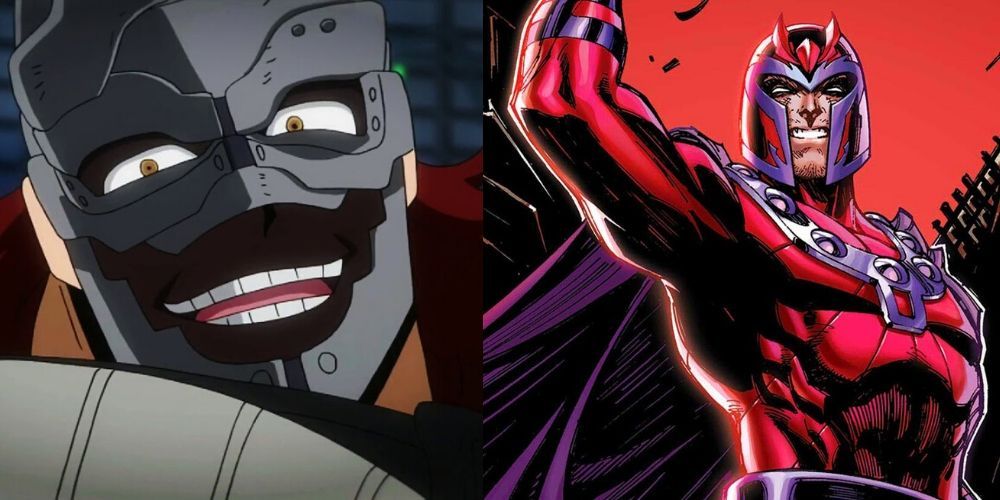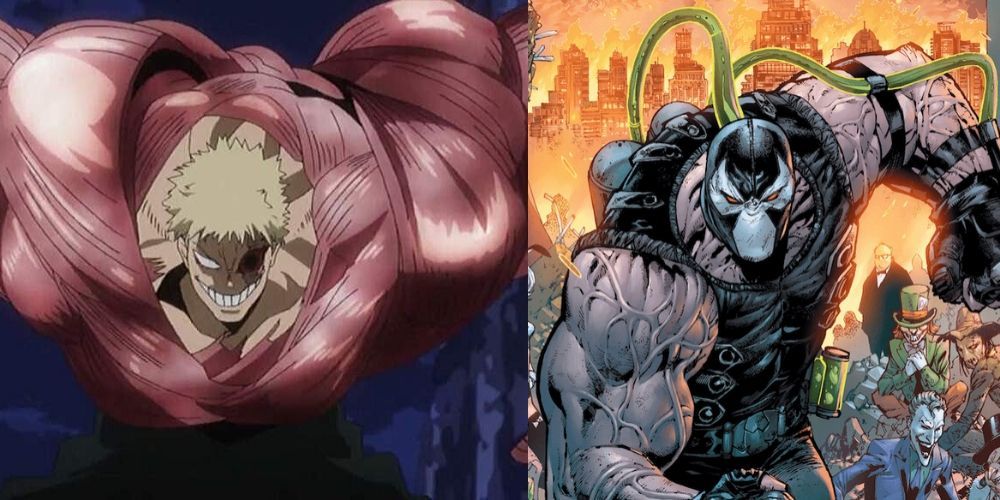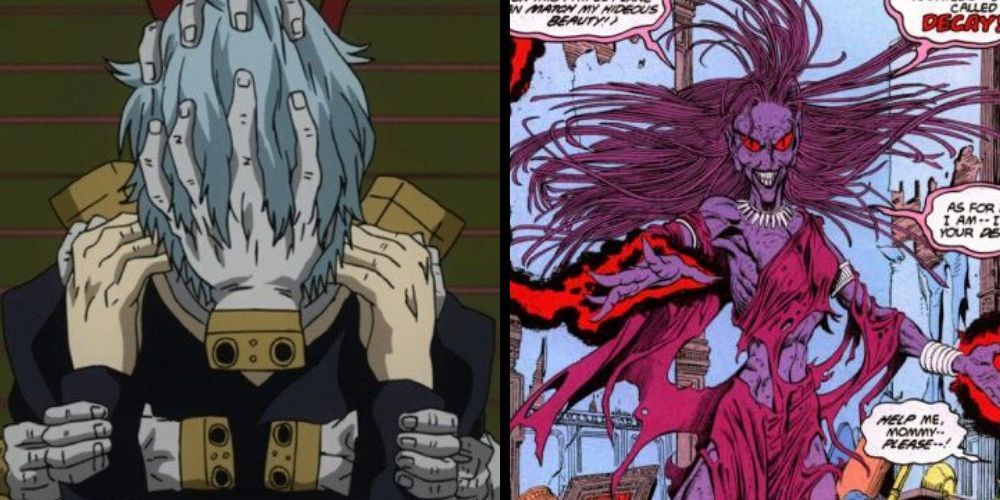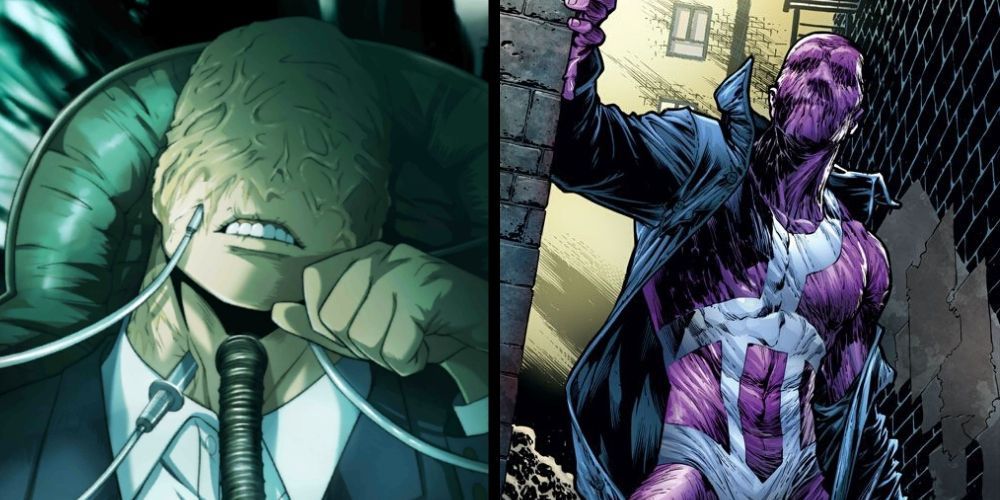My Hero Academia is a beloved series for the same reason that franchises like Marvel and DC are so successful: Their heroes are inspiring, charismatic, and relatable. While most of us thoroughly enjoy rooting for the good guys, they wouldn't really have much to do if it weren't for the supervillains that challenge them on the regular.
The Quirks found in the anime/manga series are sometimes bizarre, even when compared to comic book superpowers, but there are some irrefutable similarities nonetheless. Let's take a look at 10 of My Hero Academia's villains and the comic franchise evildoers they remind us of the most.
10 Dabi/Pyro (Simon Lasker)
Simon Lasker was only momentarily a villain — Mesmero brainwashed him into joining the Brotherhood of Evil Mutants and calling himself "Pyro" — but in that time frame he basically became their own personal Dabi. He can generate and manipulate flames without outside sources, which is an advantage he holds over the original Pyro, St. John Allerdyce.
Like Simon, Dabi can produce and control flames as he sees fit, the only difference being that his flames are blue. Dabi's biggest weakness is that the overuse of flames can damage his skin, meaning he's not fit for lengthy confrontations.
9 Chizome Akaguro (Stain)/Fang (Teen Titans)
Chizome Akaguro's Quirk is strange, even by comic villain standards. Anyone that ingests blood is typically confined by classic vampire tropes, but not Stain; Bloodcurdle allows the Hero Killer to temporarily paralyze others when he tastes their blood. While not exactly identical, Teen Titans' Fang is about as close as we'll get to Akaguro's twisted ability.
Fang is a human/spider mutant with staggering speed and agility. Though he doesn't need to consume blood to paralyze his opponents, he can shoot paralysis-inducing venom from his mouth and mandibles. He's also proficient in hand-to-hand combat and his spider legs can double as blades.
8 Swordkil/Razorsharp (Raelene Sharp)
Swordkil appeared in My Hero Academia: Two Heroes, the series' first official film. He was one of Wolfram's arrogant minions who was ultimately defeated by Izuku Midoriya. His Quirk was never given a specific name, but Swordkil could cover his forearms in large blades that he could summon instantly.
The aptly-named Razorsharp was a member of a group of data pirates whose dormant Metagene activated after a job gone wrong. Her moral alignment shifts with each storyline she's inserted into, but Sharp has tussled with the likes of Young Justice and joined forces with the Black Lantern Corps. As can be inferred, her power involves transforming her arms into large razor blades just like Swordkil.
7 Jin Bubaigawara (Twice)/Riot (Frederick von Frankenstein)
Jin has an odd, humorous temper reminiscent of Deadpool's, but his Double Quirk is the underlying reason for his split personality. This skill lets Jin create a copy of anything he touches, including people, and these replicas possess the same traits as the original. However, the copies are less durable and less competent than the real thing.
In a related field, Riot can create duplicates of himself at will and restore himself as he sees fit. Also, any damage incurred is dispersed across all of the active copies, meaning the more Riots there are, the less impact a blow from his opponent will have.
6 Sludge Villain/Venom
While Venom is leaps and bounds more capable than the slimy MHA evildoer, the two share some uncanny similarities in terms of powers. For starters, they're both highly resistant to physical injuries, including most weapons and bullets. They can also reshape their bodies as necessary since Sludge Villain is made of a liquid-like substance and Venom can stretch and deform himself.
Nonetheless, Sludge Villain's most Venom-like quality is his ability to take over another person's body and use their Quirks. This is the core of the symbiote's existence as it steadily acquires hosts, the most popular being Spider-Man (Peter Parker) and Eddie Brock.
5 Himiko Toga/Mystique
Just like Stain, Himiko Toga's Quirk bears a bizarre stipulation involving the consumption of blood — she needs to ingest it in order to activate her skill. Aside from that, she very much reminds us of Marvel's most infamous shape-shifter, Mystique.
Himiko and Mystique can both flawlessly replicate their target's appearance, plus minor details like their voice. Mystique can go so far as to duplicate retina patterns and fingerprints. The two even suffer from the same drawback; they can't obtain or use their victim's powers/Quirks. The transformations are restricted to physical appearances only.
4 Wolfram/Magneto
As the main antagonist of the My Hero Academia: Two Heroes movie, Wolfram's Metal Manipulation Quirk drew comparisons to both Magneto and Fullmetal Alchemist. Wolfram can control metallic materials by making contact with an iron surface and can create structures for both offensive and defensive purposes.
Magneto's mastery of magnetism has evolved beyond belief and he would easily defeat Wolfram in an altercation. His capabilities include flight, force fields, and magnetic rays. Regardless, the two villains are similar enough that we're thankful they can't cause mayhem together within the same franchise.
3 Muscular/Bane
Muscular's name leaves nothing to the imagination and tells you exactly what his Quirk is all about. Muscle Augmentation is also a straightforward ability that does as implied: It grants the user the opportunity to amplify their muscles for enhanced strength and durability.
When Bane utilizes a super-steroid called "Venom," his physicality is also pushed to the brink in the same manner that Muscle Augmentation intensifies its user's stats. Strength, stamina, speed, and reflexes are all brutally maximized. On top of that, Venom functions as a type of medicine that can heal most injuries.
2 Tomura Shigaraki/Decay
Shigaraki's Quirk shares its name with a Wonder Woman villainess, so it's only fitting that they're considered counterparts in alternate universes. Decay is a competent fighter and any living thing she touches will rapidly age, eventually resulting in death. Decay's breath is just as toxic and can disintegrate an opponent.
While Shigaraki doesn't possess deadly breath, anything he touches without gloves will immediately start to deteriorate. The target doesn't need to be organic for the Decay Quirk to take effect; it works on living and non-living subjects alike. The largest disadvantage he faces is the fact that physical contact is required for activation.
1 All For One/Parasite (Rudolph Jones)
As the most significant My Hero Academia villain thus far, All For One helms a ridiculously overpowered Quirk that allows him to steal abilities for himself or to transfer them to a person of his choosing. This process is done through touch and those who have their powers stolen become Quirkless.
In terms of anime counterparts, he's basically a reiteration of Hunter x Hunter's Chrollo Lucilfer. In terms of comic characters, Parasite is who All for One correlates with the most. Parasite can absorb the life energy and powers of his victims, though he can only sustain a limited amount of skills at a time. If he tackles more than he can handle, any previously stolen powers will be weakened or disabled.

